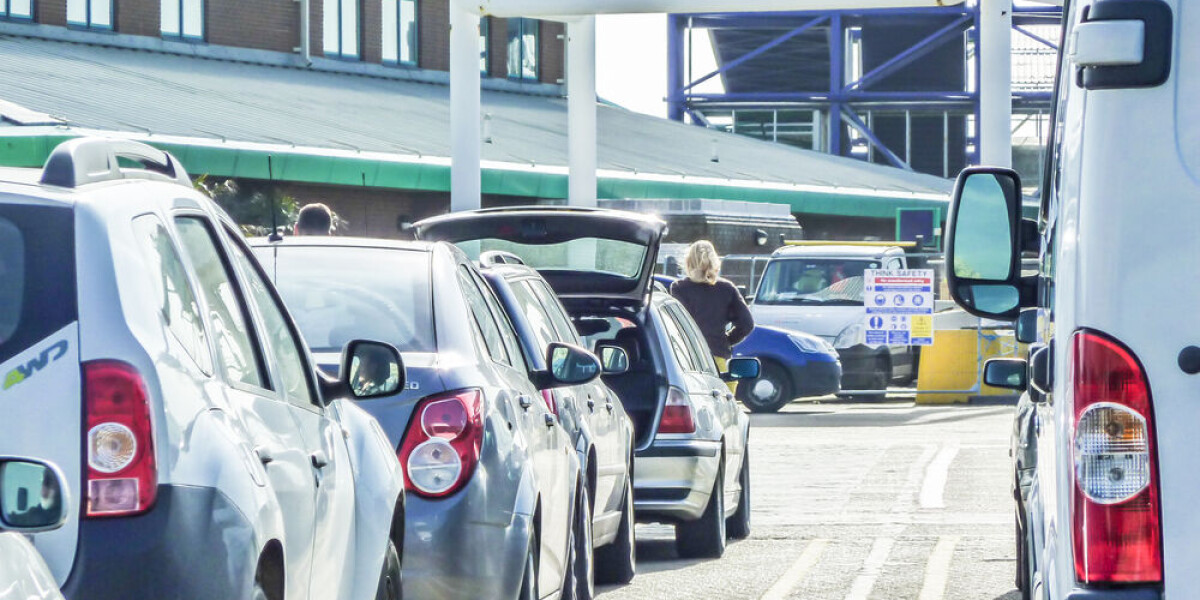
Facial recognition set to replace passports for britons travelling from france
- Select a language for the TTS:
- UK English Female
- UK English Male
- US English Female
- US English Male
- Australian Female
- Australian Male
- Language selected: (auto detect) - EN
Play all audios:

HIGH-TECH CAMERAS CAN MATCH TRAVELLERS FACES TO PASSPORT INFO TO ALLOW QUICKER RE-ENTRY Plans to expand facial recognition technology at UK border entry points should allow Britons returning
home to avoid passport queues and greatly reduce the time spent traversing the UK border. The technology is currently on trial at four British ports and is later set to expand to the
Eurostar and eventually to UK airports. It sees high-powered cameras take a photo of a traveller’s face and match it to their passport – and when driving through a border point at a port,
their vehicle’s number plate. Under the current trial, this allows vehicles to remain in ‘contactless corridors’ where they do not need to exit their vehicle. Biometric information of UK and
Irish passports are stored on a UK government database the cameras are linked to. This information is handed over during a passport application, meaning the government already has this
data. Passengers validated for entry via the new system then drive (or in the future, walk) through the border without having their passports checked manually, significantly reducing queue
times. The cameras currently on trial are powerful enough to take these images through a car windscreen, with passengers not needing to leave their vehicle before being granted entry. In
some cases, they may still need to roll down their window and look at an iPad or screen at a closer angle, but should not need to have their passport manually checked or exit their vehicle.
Passengers will still need to have their passport on hand in case of any difficulties or issues, in which was a manual check by a Border Force official is possible. It is unknown when the
system will be more widely implemented for travellers. The planned changes come amid a wave of border security digitisation, including the Entry/Exit System (EES) and Etias in the EU. Read
more: Etias travel permit for EU: April 2027 earliest date for enforcement NEW UK BORDER SECURITY CHANGES The system on trial at British ports is closely linked to the Electronic Travel
Authorisation (ETA) scheme currently in force. This sees many non-British/Irish travellers needing to apply in advance for an authorisation to enter the UK if they benefit from visa-free
visitor status. As a reminder, it comes into force from April 2 for EU citizens, the last group of visa-free travellers exempt from the rules. Travellers impacted by the rule must hand over
information about their passport and a facial photo, which is stored on a similar database. Read more: Applications for UK ‘ETA’ to open: What does this change for people in France? Only
people noted as ‘passengers of interest’ when applying for their ETA authorisation are expected to still face manual checks, leaving others free to benefit from the new technology.
Therefore, the system may be used for international travellers entering the UK – including those subject to ETA rules - if the system works well for Britons, a Labour peer in the House of
Lords said in a recent sitting. Further information on the systems, including a wider rollout date and specific travel circumstances, such as if both British and non-British travellers are
in the same vehicle, has not yet been revealed. Have you used one of the new ‘contactless corridors’ when returning to the UK? What was your experience of the system? Let us know via
